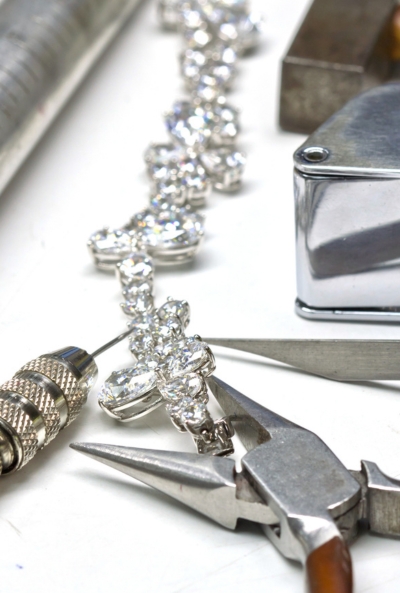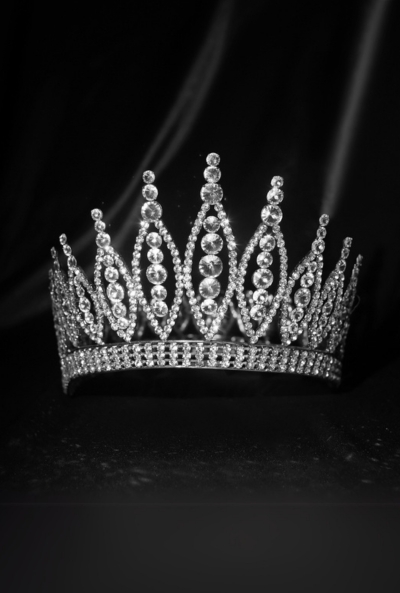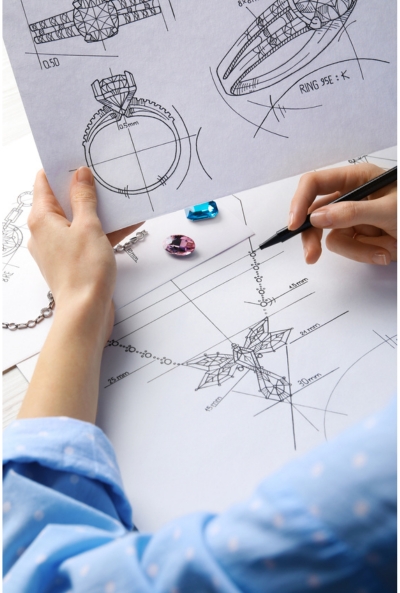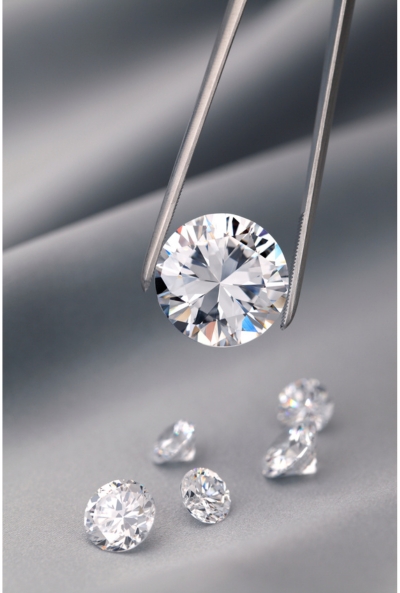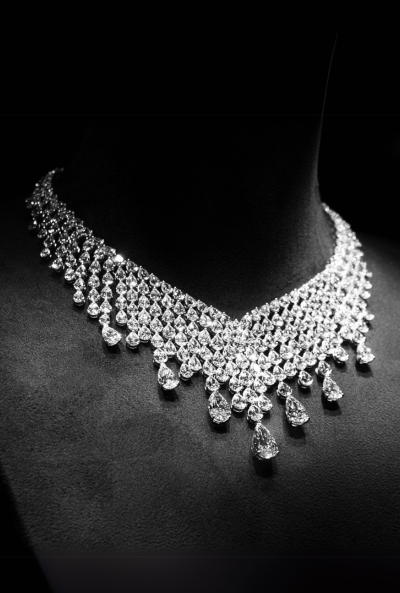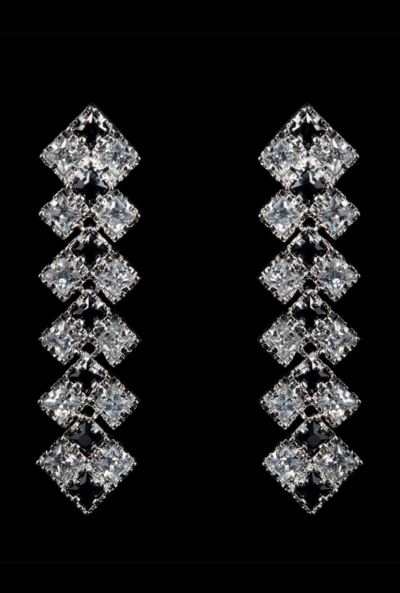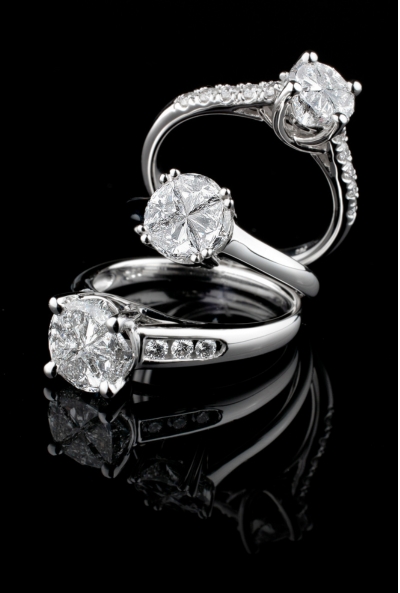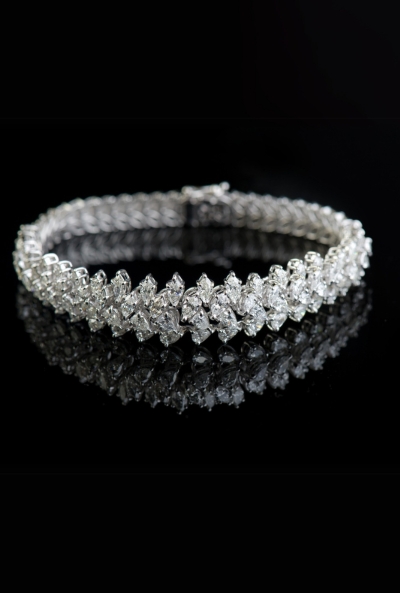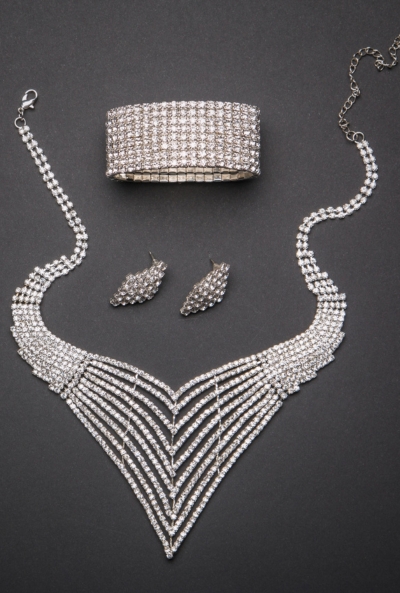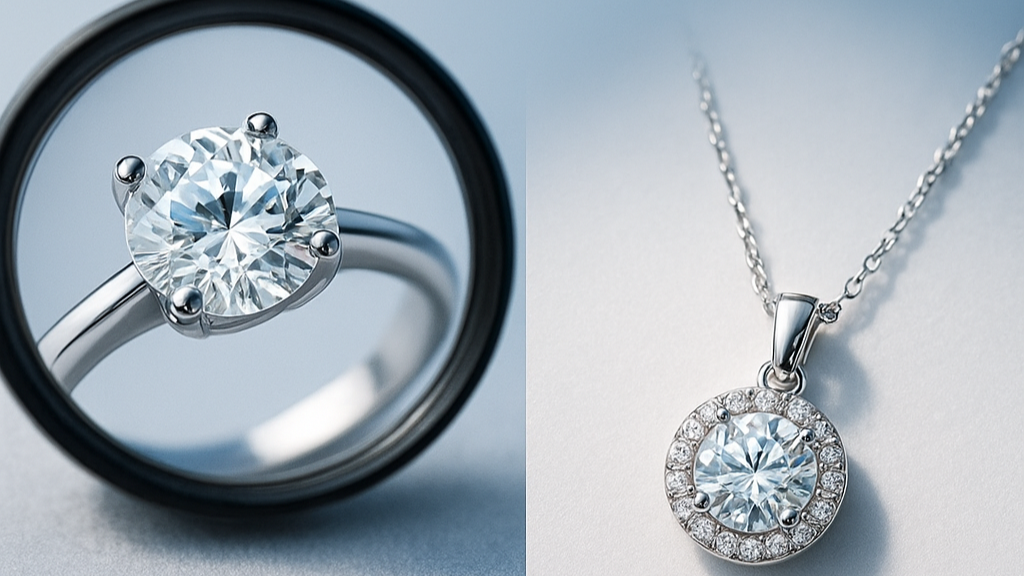
How to Choose the Right Jewellery Manufacturer for Your Brand in the UAE
by Dialmaz Admin 0 commentsFinding the right jewellery manufacturer for your brand in the UAE can make or break your business success. This guide is designed for jewelry brand owners, entrepreneurs, and retailers who want to partner with reliable manufacturers in one of the world’s leading jewelry hubs.
The UAE’s jewelry manufacturing sector offers incredible opportunities, but choosing the wrong partner can lead to quality issues, missed deadlines, and damaged brand reputation. Many brands struggle with identifying manufacturers who truly understand their vision and can deliver consistent results.
We’ll walk you through how to research UAE’s jewellery manufacturing landscape so you can identify the best potential partners in this competitive market. You’ll also learn to evaluate manufacturer credentials and expertise to ensure they have the skills and experience your brand needs. Finally, we’ll cover how to assess manufacturing capabilities and technology to guarantee your chosen partner can handle your production requirements and scale with your business growth.
Define Your Brand's Manufacturing Requirements
Determine production volume and capacity needs
Understanding your production requirements forms the foundation of manufacturer selection. Start by analyzing your current sales data and projected growth over the next 12-24 months. Consider seasonal fluctuations, particularly during peak periods like wedding seasons or holiday shopping when jewelry demand spikes significantly.
Calculate your minimum order quantities (MOQs) based on your inventory turnover rates and cash flow capabilities. Most UAE manufacturers work with MOQs ranging from 100 to 1,000 pieces per design, depending on complexity and materials used. Factor in your storage capacity and working capital when determining optimal batch sizes.
Evaluate whether you need flexibility for rush orders or custom pieces. Some brands require 70% standard production and 30% custom work, while others operate entirely on made-to-order models. Document your peak production months and communicate these clearly to potential partners.
Establish quality standards and specifications
Quality standards directly impact your brand reputation and customer satisfaction. Develop detailed technical specifications covering metal purity, gemstone grading, finishing standards, and durability requirements. For gold jewelry, specify karatage requirements and acceptable tolerances for weight variations.
Create quality control checklists that include surface finish standards, stone setting security, clasp functionality, and overall craftsmanship expectations. Consider international standards like ISO 9001 or specialized jewelry certifications that align with your target markets.
Document your return and defect rates from current suppliers to establish baseline quality metrics. Most premium brands maintain defect rates below 2%, while mass market brands typically accept 3-5%. Clearly communicate these expectations and ensure manufacturers can provide quality assurance documentation and testing certificates.
Set budget constraints and cost expectations
Develop a comprehensive cost structure that goes beyond per-piece pricing. Include setup costs, tooling fees, sampling charges, and minimum order investments. UAE manufacturers typically charge 15-30% higher than Asian alternatives but offer superior quality control and faster turnaround times.
Break down your cost analysis into material costs, labor charges, overhead expenses, and profit margins. Gold jewelry typically sees material costs representing 60-70% of total manufacturing cost, while fashion jewelry allocates 30-40% to materials.
Consider payment terms and their impact on cash flow. Many UAE manufacturers require 30-50% advance payments, with balance due upon completion. Factor in currency fluctuations if paying in AED versus USD, and evaluate whether long-term contracts can secure better pricing.
Identify target timeline and delivery schedules
Production timelines vary significantly based on complexity and manufacturer capacity. Simple designs typically require 2-4 weeks, while intricate pieces with custom settings may need 6-8 weeks. Factor in additional time for quality inspections, packaging, and shipping.
Map out your product launch schedules and work backward to establish manufacturing deadlines. Include buffer time for potential delays, especially during Ramadan or other cultural observances that may affect production schedules in the UAE.
Establish clear milestone checkpoints throughout the production process. Request progress updates at 25%, 50%, and 75% completion stages. This allows for early intervention if issues arise and ensures alignment with your marketing and sales timelines.
Consider your inventory planning needs and seasonal demands. Holiday collections often require production to begin 4-6 months in advance, while fast-fashion jewelry may need monthly production cycles to maintain freshness and respond to trends.
Research UAE's Jewellery Manufacturing Landscape
Understand Dubai's position as a global jewellery hub
Dubai stands as the world’s third-largest gold trading center, handling approximately 40% of the global gold trade annually. The city processes over 2,500 tons of gold each year, making it a powerhouse in the international jewelry market. This massive volume creates an ecosystem where manufacturers benefit from competitive raw material pricing, efficient supply chains, and access to precious metals from around the globe.
The Dubai Multi Commodities Centre (DMCC) has transformed the emirate into a strategic bridge between Eastern suppliers and Western markets. Major international brands source their jewelry through Dubai-based manufacturers who maintain relationships with mines in Africa, refineries in Switzerland, and cutting facilities in India. This interconnected network means local manufacturers can offer shorter lead times and more flexible sourcing options compared to manufacturers in other regions.
Dubai’s tax-free environment and streamlined import-export procedures create significant cost advantages. Manufacturers can import raw materials without heavy duties and export finished products with minimal bureaucratic delays. The city’s strategic location allows jewelers to serve markets across three continents within an eight-hour flight, making it an ideal base for brands targeting diverse international markets.
Explore different manufacturing zones and locations
Dubai’s jewelry manufacturing landscape spans several distinct zones, each offering unique advantages for different types of production and business models.
Dubai Gold Souk and surrounding areas house hundreds of traditional jewelry workshops. These smaller-scale operations excel in custom pieces, repairs, and traditional Arabic jewelry designs. Manufacturers in this area typically employ skilled craftsmen who have inherited techniques passed down through generations.
DMCC Free Zone attracts larger-scale manufacturers focused on international trade. Companies here benefit from 100% foreign ownership, full profit repatriation, and streamlined licensing procedures. The zone houses both high-volume manufacturers serving global retailers and boutique operations creating luxury pieces for premium brands.
Dubai Industrial City and Al Quoz Industrial Area provide space for manufacturers requiring larger facilities and heavy machinery. These locations suit businesses focused on mass production, automated processes, and extensive quality control laboratories.
Sharjah and Ajman offer cost-effective alternatives while remaining close to Dubai’s infrastructure. Manufacturers in these neighboring emirates often provide competitive pricing while maintaining access to Dubai’s supply chains and export facilities.
Zone | Specialization | Advantages | Best For |
Gold Souk Area | Traditional craftsmanship | Heritage techniques, skilled artisans | Custom pieces, traditional designs |
DMCC Free Zone | International trade | Tax benefits, global connectivity | Export-focused brands |
Dubai Industrial City | Large-scale production | Modern facilities, automation | High-volume manufacturing |
Sharjah/Ajman | Cost-effective operations | Lower overheads, competitive pricing | Budget-conscious brands |
Compare traditional craftsmanship versus modern technology approaches
Traditional craftsmanship remains deeply rooted in UAE jewelry manufacturing, with master craftsmen creating intricate pieces using techniques perfected over centuries. These artisans specialize in hand-engraving, traditional Arabic filigree work, and complex geometric patterns that define Middle Eastern jewelry aesthetics. Many manufacturers maintain workshops where skilled goldsmiths work with simple tools, creating unique pieces that showcase individual artistry and cultural heritage.
Hand-crafted jewelry typically requires longer production times but offers unmatched customization capabilities. Craftsmen can adjust designs during creation, accommodate special requests, and create truly one-of-a-kind pieces. This approach works well for luxury brands seeking exclusivity and customers who value the human touch in their jewelry.
Modern technology has revolutionized jewelry manufacturing in the UAE, with many facilities now equipped with CAD/CAM systems, 3D printing capabilities, and automated casting equipment. These technologies enable precise reproduction of designs, consistent quality across large batches, and rapid prototyping for new collections. Laser welding, computer-controlled stone setting, and advanced finishing techniques allow manufacturers to achieve levels of precision impossible through hand methods alone.
Technology-driven manufacturers can produce complex designs with mathematical precision, reduce material waste through optimized layouts, and maintain detailed quality control records. They excel in producing engagement rings with precise specifications, branded jewelry requiring exact consistency, and pieces with intricate technical features like hidden clasps or moving parts.
Many successful UAE manufacturers blend both approaches, using technology for precision work while employing skilled craftsmen for artistic finishing touches. This hybrid model combines efficiency with artistry, offering brands the best of both worlds depending on their specific requirements and target markets.
Evaluate Manufacturer Credentials and Expertise
Verify business licenses and regulatory compliance
Check that your potential manufacturing partner holds all necessary licenses from UAE authorities. The Department of Economic Development (DED) in each emirate issues trade licenses, while specialized jewelry manufacturing requires additional permits from the Ministry of Economy. Look for manufacturers registered with the Dubai Multi Commodities Centre (DMCC) or similar free zones, as these often indicate serious business operations with proper regulatory oversight.
Request documentation showing compliance with UAE labor laws, environmental regulations, and precious metals handling requirements. Manufacturers dealing with gold, diamonds, and other precious materials must maintain specific certifications from the Emirates Gold & Jewellery Group and relevant assaying offices. Don’t skip this step – working with unlicensed operators can expose your brand to legal risks and quality issues.
Assess years of experience and industry reputation Here
Experience matters significantly in jewelry manufacturing. Look for companies with at least 5-10 years in the business, as they’ve weathered market changes and developed refined processes. However, don’t automatically dismiss newer companies if they demonstrate strong technical capabilities and founder expertise.
Research their client portfolio and case studies. Established manufacturers often work with multiple international brands and can provide references. Check online reviews, industry publications, and trade show presence. Visit jewelry exhibitions like the Middle East Watch & Jewellery Show where reputable manufacturers showcase their work.
Ask about their leadership team’s background. Many successful UAE jewelry manufacturers have founders or key personnel with decades of experience from traditional jewelry hubs like Italy, India, or Turkey.
Review specialization in your jewellery category
Different manufacturers excel in specific areas. Some focus on fine jewelry with precious stones, others specialize in fashion jewelry or custom pieces. Match their expertise to your product line requirements.
Specialization Type | Best For | Key Considerations |
Fine Jewelry | Luxury brands, high-value pieces | Precious metal expertise, gemstone setting |
Fashion Jewelry | Mass market, trendy pieces | Cost efficiency, quick turnaround |
Custom Manufacturing | Unique designs, personalization | Design flexibility, small batch capability |
Branded Collections | Established brands | Brand protection, consistency |
Review their portfolio across different categories. A manufacturer claiming to handle everything might lack depth in your specific area. Look for detailed samples that demonstrate their craftsmanship level in your jewelry type.
Check international certifications and quality standards
Quality certifications provide objective validation of manufacturing capabilities. Look for ISO 9001:2015 for quality management systems, which shows systematic approaches to consistent production. For precious metals, seek manufacturers with hallmarking certifications from recognized bodies like the London Bullion Market Association (LBMA).
Diamond and gemstone specialists should hold certifications from major grading institutes like GIA, Gübelin, or SSEF. Environmental and ethical certifications like Responsible Jewellery Council (RJC) membership indicate commitment to sustainable practices.
Request certificates and verify their validity directly with issuing organizations. Some manufacturers display expired or false certifications, so independent verification protects your brand reputation.
Examine export capabilities and global reach
UAE’s strategic location makes it an excellent export hub, but not all manufacturers leverage this advantage effectively. Evaluate their shipping partnerships, customs handling experience, and documentation processes for international trade.
Check their existing export markets and shipping track record. Manufacturers with established global relationships often provide better logistics support, competitive shipping rates, and smoother customs clearance. They understand different market requirements, packaging standards, and regulatory compliance across various countries.
Ask about their experience with your target markets specifically. Different regions have varying quality expectations, certification requirements, and cultural preferences that experienced exporters navigate more effectively.
Assess Manufacturing Capabilities and Technology
Tour Production Facilities and Equipment
Walking through a potential manufacturer’s facility reveals everything about their capabilities and commitment to quality. Start by examining their machinery – modern jewellery production demands precision equipment like CAD/CAM systems, 3D printers for rapid prototyping, and CNC machines for detailed metalwork. Look for laser welders, ultrasonic cleaners, and automated polishing systems that ensure consistent finishes.
Pay attention to the workspace organization and cleanliness. A well-maintained facility with proper ventilation, adequate lighting, and organized workstations indicates professional management. Check if they have dedicated areas for different processes – casting, setting, polishing, and quality inspection should have separate, specialized zones.
Ask about their production capacity and current utilization rates. A manufacturer running at 100% capacity might struggle with your timelines, while one with significant unused capacity could signal market challenges. The sweet spot is typically 70-80% utilization, allowing flexibility for rush orders while maintaining steady operations.
Examine their gemstone handling facilities if relevant to your brand. Secure storage systems, proper lighting for stone selection, and microscopic inspection stations are essential for quality stone setting. Digital inventory management systems show they take tracking and accountability seriously.
Evaluate Design and Prototyping Services
Strong design capabilities separate exceptional manufacturers from basic production houses. Review their in-house design team’s portfolio and software capabilities. Top manufacturers use advanced CAD programs like Rhino, Matrix, or JewelCAD, enabling complex designs and precise specifications.
Ask to see their prototyping process from concept to physical sample. The best manufacturers offer multiple prototyping options:
- 3D printed resin models for initial concept review
- Wax models for traditional lost-wax casting validation
- Metal prototypes for final approval before production
Request examples of custom work they’ve completed for other brands. This demonstrates their ability to translate unique concepts into manufacturable products. Pay attention to design complexity, attention to detail, and finish quality in their samples.
Discuss their revision process and associated costs. Understanding how they handle design changes during development prevents surprises later. Some manufacturers include a specific number of revisions in their initial quote, while others charge per modification.
Review Quality Control Processes and Testing Procedures
Quality control systems make or break product consistency and brand reputation. Examine their inspection procedures at each production stage – from raw material verification to final product approval. Professional manufacturers maintain detailed quality checkpoints throughout their workflow.
Ask about their testing capabilities and certifications. Essential testing includes:
Test Type | Purpose | Equipment Required |
Alloy composition | Metal purity verification | XRF analyzer |
Gemstone authentication | Natural/synthetic identification | Spectrometer |
Durability testing | Wear resistance assessment | Tumbling equipment |
Hallmarking compliance | Legal standard verification | Assay testing |
Review their quality documentation systems. Manufacturers should maintain records for each piece, including material certificates, production notes, and inspection reports. This traceability becomes crucial for warranty claims or quality issues.
Discuss their defect management process. Understanding how they handle returns, repairs, and quality failures shows their commitment to customer satisfaction. The best manufacturers have clear policies for addressing quality issues and often provide replacement guarantees for manufacturing defects.
Analyze Pricing Structure and Value Proposition
Compare transparent pricing models
When evaluating jewellery manufacturers in the UAE, look for partners who break down their costs clearly rather than giving you vague lump sum quotes. The best manufacturers will separate material costs, labor charges, design fees, and finishing work. This transparency helps you understand exactly what you’re paying for and makes it easier to negotiate or adjust specifications if needed.
Some manufacturers operate on cost-plus models where they charge materials at market rates plus a fixed percentage markup. Others prefer fixed pricing based on detailed specifications. Request sample pricing breakdowns for similar pieces to your product line and compare how different manufacturers structure their quotes.
Watch out for hidden fees that only surface later in the process. Quality manufacturers will upfront about additional costs like sampling fees, tooling charges, packaging, or certification expenses. Ask specifically about these potential extras during your initial discussions.
Understand minimum order quantities and scaling options
Most UAE jewellery manufacturers have minimum order requirements that vary significantly based on the complexity and materials of your pieces. Basic gold or silver items might have MOQs of 50-100 pieces, while intricate designs with precious stones could require larger minimums to justify setup costs.
Smart manufacturers offer flexible scaling options as your brand grows. Look for partners who can start with smaller quantities but have the capacity to handle larger orders as your business expands. Some manufacturers even offer graduated pricing tiers where your per-piece cost decreases as order volumes increase.
Order Volume | Typical Pricing Structure |
50-100 pieces | Standard rate + setup fees |
101-500 pieces | 5-10% discount on labor |
500+ pieces | 10-15% discount + reduced setup |
Evaluate additional services included in pricing
The best manufacturing partnerships extend beyond just production. Many UAE manufacturers include valuable add-on services that can significantly impact your total cost of ownership. These might include design consultations, CAD modeling, quality control documentation, and packaging services.
Some manufacturers offer comprehensive packages that include sourcing certified gemstones, providing authentication certificates, and even drop-shipping directly to your customers. While these bundled services might seem more expensive upfront, they often provide better value than managing multiple vendors separately.
Consider manufacturers who include revision rounds in their pricing structure. Design changes are common in jewellery manufacturing, and partners who allow 2-3 rounds of modifications without additional charges can save you substantial costs during product development.
Assess payment terms and financial flexibility
Payment structures vary widely among UAE manufacturers, and the terms can significantly impact your cash flow. Traditional manufacturers often require 50% upfront with the balance due before shipping. More progressive partners might offer 30% down, 30% at production milestone, and 40% on completion.
Some established manufacturers extend net-30 or even net-60 payment terms to qualified customers with good credit history. These arrangements can be particularly valuable for seasonal businesses or brands with longer sales cycles.
Look for manufacturers who accept multiple payment methods including bank transfers, letters of credit, or even cryptocurrency in some cases. Flexible payment options demonstrate a manufacturer’s commitment to working with international brands and understanding different business needs.
Consider the financial stability of your manufacturing partner. Request references from other long-term clients and check their business registration status. A financially stable manufacturer is less likely to demand rushed payments or compromise on quality due to cash flow pressures.
Examine Communication and Partnership Approach
Test Responsiveness and Language Proficiency
Communication gaps can derail even the most promising manufacturing partnerships. Start by evaluating how quickly potential manufacturers respond to your initial inquiries. A manufacturer who takes days to reply to a simple quote request might struggle with urgent production issues later. Quality manufacturers typically respond within 24-48 hours, demonstrating they value your business and maintain efficient communication systems.
Language proficiency extends beyond basic English comprehension. Your manufacturer should understand industry-specific terminology, technical specifications, and cultural nuances that affect jewelry design preferences. Test this during initial conversations by discussing complex design elements, material specifications, or timeline adjustments. Pay attention to whether they ask clarifying questions when needed rather than making assumptions.
Consider requesting a brief phone or video call to assess verbal communication skills. This reveals pronunciation clarity, confidence levels, and their ability to explain technical processes in understandable terms. Manufacturers who communicate clearly from the start will likely maintain this standard throughout your partnership.
Evaluate Project Management and Reporting Systems
Modern jewelry manufacturing requires sophisticated project management approaches to handle multiple orders, deadlines, and quality standards simultaneously. Ask potential manufacturers about their project tracking systems and request demonstrations of their reporting tools. Professional manufacturers often use digital platforms that provide real-time updates on production stages, material sourcing, and delivery timelines.
Quality reporting systems should include visual progress updates with photographs at key manufacturing stages. This transparency allows you to catch potential issues early and ensures your specifications are being followed accurately. Look for manufacturers who provide detailed production schedules with milestone markers, enabling you to plan inventory and marketing campaigns effectively.
Request examples of their standard reporting formats. Professional manufacturers provide structured updates covering material procurement status, production progress percentages, quality control checkpoints, and any encountered challenges with proposed solutions. This level of detail indicates organizational maturity and customer service commitment.
Assess Willingness to Accommodate Custom Requirements
Flexibility separates exceptional manufacturers from average ones. Your brand likely has unique requirements that distinguish it from competitors, whether special packaging needs, custom hallmarking, specific material sourcing, or unique design modifications. Test potential manufacturers by presenting realistic but challenging custom requests during initial discussions.
Pay attention to their initial reactions. Do they immediately explain why something isn’t possible, or do they explore creative solutions? Quality manufacturers often suggest alternative approaches that achieve your goals while working within their capabilities and your budget constraints.
Ask about their minimum order quantities for custom work and whether they can accommodate sample orders for testing new designs. Manufacturers willing to work with smaller initial orders often provide better long-term partnerships as your brand grows. Document their custom work policies clearly to avoid misunderstandings later.
Review Dispute Resolution and Problem-Solving Approaches
Manufacturing partnerships inevitably encounter challenges, from material shortages to quality issues or delivery delays. Understanding how potential manufacturers handle problems before signing contracts prevents future headaches. Ask specific questions about their approaches to common scenarios: delayed raw material deliveries, quality defects discovered during production, or urgent timeline changes.
Professional manufacturers have established protocols for handling disputes and typically maintain clear escalation procedures. They should be able to describe their quality control measures, including how they handle products that don’t meet specifications. Look for manufacturers who take responsibility for their mistakes rather than shifting blame to suppliers or external factors.
Request references from current clients and ask about their experiences with problem resolution. This provides insight into the manufacturer’s character under pressure and their commitment to maintaining client relationships. Manufacturers who proactively communicate about potential issues and offer solutions demonstrate the partnership mentality essential for long-term success.
Conduct Due Diligence and Final Selection
Request and contact previous client references
Speaking directly with past clients reveals the manufacturer’s true capabilities beyond their marketing materials. Ask for at least three references from recent projects, ideally brands with similar jewelry types or price points to yours. Focus your questions on delivery timelines, quality consistency, communication responsiveness, and how well the manufacturer handled unexpected challenges or design modifications.
Pay attention to the manufacturer’s willingness to provide references quickly and without hesitation. Legitimate manufacturers maintain positive relationships with clients and gladly share contact information. When contacting references, ask specific questions about production volumes, defect rates, pricing stability throughout long-term contracts, and the manufacturer’s flexibility during market fluctuations.
Don’t limit yourself to formal references only. Research the manufacturer’s portfolio online, check industry forums, and connect with other jewelry brand owners through social media networks. This broader research often uncovers insights that formal references might not share, such as hidden costs, communication gaps, or quality issues that emerged after project completion.
Review sample quality and craftsmanship standards
Physically examine multiple samples representing different complexity levels and price ranges the manufacturer produces. Quality jewelry manufacturing shows consistent attention to detail across all price points, not just premium pieces. Look for uniform metal finishing, precise stone settings, secure clasps, and clean solder joints.
Create a standardized evaluation checklist covering surface finish quality, dimensional accuracy, weight consistency, and durability testing results. Test mechanisms like hinges, clasps, and moving parts repeatedly to assess their long-term reliability. Compare samples under different lighting conditions to identify potential color matching issues or surface imperfections.
Request samples from recent production runs rather than showcase pieces created specifically for sales presentations. Recent samples better represent current manufacturing standards and workforce capabilities. Consider hiring an independent jewelry appraiser for technical evaluation if your team lacks specialized expertise in jewelry construction and materials assessment.
Negotiate contract terms and service agreements
Start negotiations with clear minimum requirements for quality standards, delivery schedules, payment terms, and intellectual property protection. Include specific clauses covering defect rates, remediation procedures, and quality control checkpoints throughout production. Establish realistic but firm delivery timelines with penalty clauses for delays beyond agreed buffer periods.
Address intellectual property protection comprehensively, especially if providing proprietary designs or exclusive collections. Include non-disclosure agreements, design ownership rights, and restrictions on manufacturing similar pieces for competitors. Dubai’s business environment offers strong legal frameworks, but clear contractual language prevents misunderstandings.
Build flexibility into pricing structures to accommodate metal price fluctuations and order volume changes. Many successful partnerships include tiered pricing based on annual volume commitments, allowing both parties to benefit from business growth. Include termination clauses that protect your brand while allowing reasonable transition periods for both parties to fulfill existing obligations and transfer any proprietary materials or tooling.
Finding the perfect jewelry manufacturer for your UAE-based brand comes down to doing your homework and knowing exactly what you need. Start by getting crystal clear on your brand requirements, then dive deep into researching the local manufacturing scene. Don’t skip the important stuff like checking credentials, evaluating their tech capabilities, and making sure their pricing makes sense for your business model.
The best partnerships happen when communication flows easily and both sides are committed to long-term success. Take your time with due diligence – visit facilities, ask tough questions, and trust your gut feeling about whether they truly understand your vision. Your manufacturer isn’t just a supplier; they’re a crucial partner who can make or break your brand’s reputation. Choose wisely, and you’ll have a foundation that supports your jewelry business for years to come.

